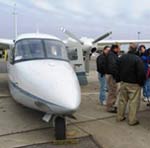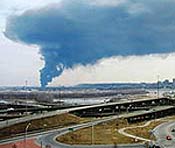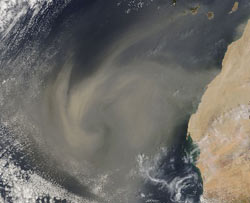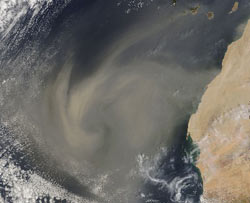On Change
Thursday, January 15th, 2009Marcus Peacock is EPA’s Deputy Administrator.
My mother was born two weeks before Lindbergh crossed the Atlantic. She has witnessed amazing changes in her life: the advent of air transportation, the proliferation of television, the near eradication of scourges like small pox and polio, men walking on the moon, the internet. Yet when I asked her how she felt about these changes, I did not get the response I expected. She shrugged. “Yes, things have improved a lot.” That was it.
Deep in middle age, I now understand that answer. The time scale our brains work with is easily swamped by the broader march of technology. After a dash of initial wonder, we just assimilate advances and move on. A few decades ago, every Christmas Day my family would crowd around a phone in our house and have hurried static-filled ‘long distance’ conversations with relatives in other lands. Two weeks ago one of my kids got a call from a friend. My daughter was walking in the woods. Her friend was sitting in a cafe in Florence, Italy. This does not amaze them. It no longer amazes me. In fact, I can’t really remember how we got to this place. It just happened.
Today the Administrator signed a proposed rule modifying how EPA determines the Air Quality Index for fine particle pollution. As proposals go, it is not terribly notable. And yet . . . this will be the first proposed rule issued by a federal agency that will allow the public to comment on the rule using a blog. The blog will be open from March 2 to March 11 which corresponds to public hearings on the proposal. Stay tuned to Greenversations for more information on how to participate. Mark it as a small step on the way to what I believe will be a dramatic change in the way the federal government crafts rules and regulations. A small step, but one that, with others, will accumulate to the point where the government will be able to produce better quality rules much more quickly than in the past.
We live in the Information Age. It is sweeping over us like advancing waves on a beach. Federal agencies can either seize the tools that are coming from this change or just let the tide pick us up and deposit us in a new place. EPA is choosing to seize the day. We are not doing this because we want to amaze people with whiz-bang Web 2.0 technology. We do this because when someone in the future is asked about the changes they have seen in the environment, they will just shrug their shoulders and say, “Yes, things have improved a lot.”

 EPA’s Airborne Spectral Photometric Collection Technology, known as
EPA’s Airborne Spectral Photometric Collection Technology, known as  This was the
This was the 

 Every summer, particles of dust from the Sahara Desert travel halfway around the globe and settle in the Caribbean area around Puerto Rico. This dust impacts not only our air quality, but the climate. This cloud, full of minerals and fungi, alters the quality of air and impacts not only respiratory health, but ecosystems as well. Some studies trace the loss of coral reefs in the Caribbean to this phenomenon. It’s incredible that these small particles from the Sahara Desert in Africa can cause so many adverse impacts to the environment and health an ocean away.
Every summer, particles of dust from the Sahara Desert travel halfway around the globe and settle in the Caribbean area around Puerto Rico. This dust impacts not only our air quality, but the climate. This cloud, full of minerals and fungi, alters the quality of air and impacts not only respiratory health, but ecosystems as well. Some studies trace the loss of coral reefs in the Caribbean to this phenomenon. It’s incredible that these small particles from the Sahara Desert in Africa can cause so many adverse impacts to the environment and health an ocean away. Todos los veranos las partículas de polvo del Desierto del Sahara viajan alrededor del mundo y se asientan en el área del Caribe, especialmente en Puerto Rico. Este polvo no solo afecta nuestra calidad de aire, pero también el clima. La nube, lleva de minerales y hongos, altera la calidad del aire e impacta severamente a aquellos con condiciones respiratorias, pero también afecta los ecosistemas. Inclusive algunos estudios asocian la pérdida de corales en el Caribe a este fenómeno. Es increíble que partículas tan pequeñas sean responsables de tanto impactos adversos al medioambiente, las personas y a los ecosistemas que se encuentran a un océano de por medio.
Todos los veranos las partículas de polvo del Desierto del Sahara viajan alrededor del mundo y se asientan en el área del Caribe, especialmente en Puerto Rico. Este polvo no solo afecta nuestra calidad de aire, pero también el clima. La nube, lleva de minerales y hongos, altera la calidad del aire e impacta severamente a aquellos con condiciones respiratorias, pero también afecta los ecosistemas. Inclusive algunos estudios asocian la pérdida de corales en el Caribe a este fenómeno. Es increíble que partículas tan pequeñas sean responsables de tanto impactos adversos al medioambiente, las personas y a los ecosistemas que se encuentran a un océano de por medio.